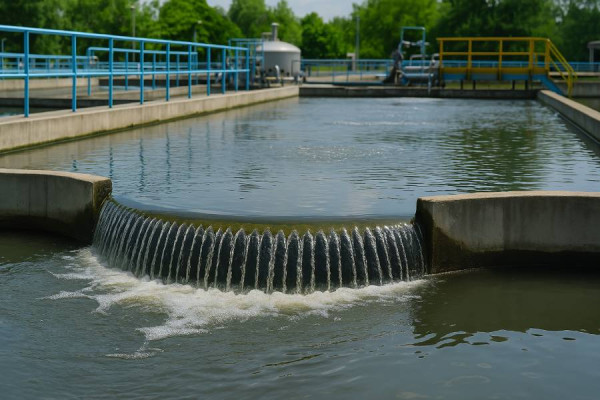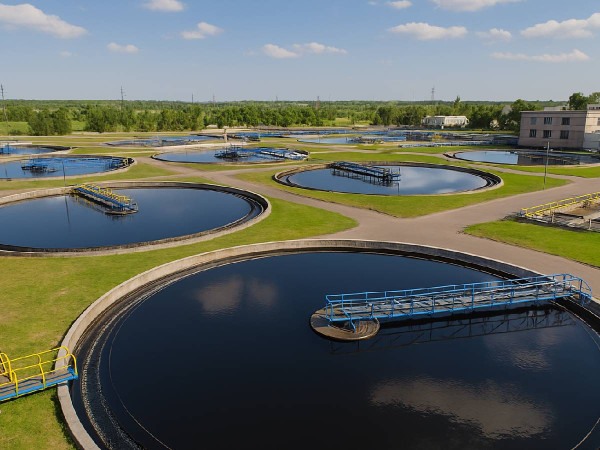News & Blogs
Innovative Approaches to Wastewater Management in Nepal: Ensuring Clean Water for All

Nestled between the towering Himalayas and the lush plains of the Terai, Nepal is a land of breathtaking beauty and rich cultural heritage. Yet, beneath its natural splendor lies a growing challenge: wastewater management. With rapid urbanization, population growth, and limited infrastructure, Nepal faces a critical need to address its wastewater crisis to ensure clean water for all. But amidst these challenges, innovative approaches are emerging, offering hope for a sustainable future.
The Current State of Wastewater in Nepal
Nepal generates approximately 290 million liters of wastewater daily, with urban areas like Kathmandu contributing a significant portion. Shockingly, only 10-15% of this wastewater is treated before being discharged into rivers and streams. The rest flows untreated, contaminating water sources, harming ecosystems, and endangering public health.
The Bagmati River, which flows through the heart of Kathmandu, is a stark example. Once considered sacred, it is now heavily polluted with untreated sewage, industrial waste, and solid debris. This pollution not only affects the river’s biodiversity but also poses serious health risks to communities relying on it for drinking water, irrigation, and religious practices.
Why Wastewater Management Matters
Access to clean water is a fundamental human right, yet 3.5 million people in Nepal lack access to safe drinking water. Contaminated water sources contribute to waterborne diseases like diarrhea, cholera, and typhoid, which are leading causes of mortality, especially among children under five.
Moreover, untreated wastewater affects agriculture, a cornerstone of Nepal’s economy. Farmers often use polluted water for irrigation, leading to soil degradation and crop contamination. This vicious cycle of pollution and poverty underscores the urgent need for effective wastewater management.
Innovative Solutions on the Horizon
Despite the challenges, Nepal is witnessing a wave of innovation in wastewater management. These approaches are not only addressing the technical aspects of wastewater treatment but also incorporating community engagement, policy reforms, and sustainable practices.
1. Decentralized Wastewater Treatment Systems (DEWATS)
One of the most promising solutions is the adoption of Decentralized Wastewater Treatment Systems (DEWATS). Unlike centralized systems, which require extensive infrastructure, DEWATS are small-scale, cost-effective, and can be tailored to local needs.
In the town of Dhulikhel, just outside Kathmandu, a DEWATS plant has been successfully treating wastewater from households, schools, and hospitals. The treated water is reused for irrigation and gardening, reducing the strain on freshwater resources. This model is now being replicated in other parts of the country, offering a scalable solution for urban and peri-urban areas.
2. Nature-Based Solutions
Nepal is also turning to nature-based solutions, such as constructed wetlands, to treat wastewater. These systems use plants, soil, and microorganisms to filter and purify water, mimicking natural processes.
In the Terai region, a pilot project has transformed a polluted community pond into a thriving wetland. The wetland not only treats wastewater but also provides habitat for birds and fish, enhancing local biodiversity. Such initiatives demonstrate how nature-based solutions can be both environmentally friendly and economically viable.
3. Community-Led Initiatives
Community involvement is at the heart of Nepal’s wastewater management efforts. In the village of Siddhipur, residents have come together to build a biogas plant that treats organic waste and produces clean energy. The byproduct, a nutrient-rich slurry, is used as fertilizer, creating a circular economy that benefits both people and the planet.
These grassroots initiatives highlight the power of local knowledge and collective action. By empowering communities to take ownership of wastewater management, Nepal is fostering a culture of sustainability and resilience.
4. Policy and Partnerships
The government of Nepal, with support from international organizations, is also stepping up its efforts. The National Urban Water Supply and Sanitation Policy aims to improve wastewater management and ensure access to clean water for all by 2030. Partnerships with organizations like the World Bank and UNICEF are bringing in much-needed funding and expertise.
For instance, the Kathmandu Valley Water Supply Improvement Project is working to upgrade the city’s water and wastewater infrastructure. While progress has been slow, these initiatives signal a growing commitment to addressing the wastewater crisis.
5. Reuse and Recycling of Treated Wastewater
In urban centers like Kathmandu, the concept of reusing treated wastewater is gaining traction. Hotels, hospitals, and industries are increasingly adopting on-site treatment plants to recycle water for non-potable uses such as gardening, cleaning, and toilet flushing. For instance, a prominent hotel in Kathmandu has installed a recycling system that treats 20,000 liters of wastewater daily, reducing its freshwater consumption by 30%. Such initiatives not only alleviate pressure on freshwater resources but also demonstrate the potential for scaling up recycling efforts across the country.
Government Efforts and Policy Initiatives
The government of Nepal, through agencies like the Department of Environment and DWSS, has started to recognize the need for a holistic and innovative approach to wastewater management. In recent years, the government has pushed for the integration of modern technologies in its urban planning, alongside strengthening existing regulatory frameworks.
In 2019, the Kathmandu Valley Wastewater Management Project was initiated to improve the city’s wastewater infrastructure, with funding from the Asian Development Bank. The project aims to expand and upgrade the existing treatment plants and establish new facilities that will treat wastewater efficiently. With a focus on sustainability, the project includes provisions for reusing treated water in industrial processes, reducing the overall demand for fresh water.
The Road Ahead
Nepal’s journey toward sustainable wastewater management is far from over. Challenges like limited funding, weak enforcement of regulations, and climate change-induced water scarcity continue to loom large. However, the innovative approaches being implemented offer a glimmer of hope.
By combining technology, nature, and community engagement, Nepal is paving the way for a future where clean water is not a privilege but a right. As the country strives to achieve the Sustainable Development Goals (SDGs), particularly SDG 6 (Clean Water and Sanitation), these efforts serve as a reminder that even the most daunting challenges can be overcome with creativity and collaboration.
Case Study: CivilTech’s Contribution to Wastewater Management
CivilTech Construction and Suppliers has been at the forefront of Nepal’s infrastructure development, with a strong focus on water and wastewater systems. Their projects include the construction of water treatment plants, pipelines, and sanitation facilities in urban and rural areas. By leveraging their engineering expertise, CivilTech is helping to address the country’s wastewater crisis, ensuring that communities have access to clean and safe water.
One notable example is their involvement in the Kathmandu Valley Water Supply Improvement Project, where they contributed to upgrading the city’s water and wastewater infrastructure. Their work not only improves public health but also supports Nepal’s broader goals of achieving sustainable development and environmental conservation.
A Call to Action
The story of wastewater management in Nepal is not just about pipes and plants; it’s about people. It’s about a farmer in Terai who can grow safe, healthy crops. It’s about the child in Kathmandu who no longer falls ill from drinking contaminated water. And it’s about the communities coming together to protect their rivers, their land, and their future.
As we reflect on Nepal’s progress, let us remember that clean water is a shared responsibility. Whether through supporting local initiatives, advocating for policy changes, or simply raising awareness, each of us has a role to play in ensuring clean water for all.
Nepal’s rivers may be polluted today, but with innovation and determination, they can flow clean once more. The journey is long, but the destination—a sustainable, equitable future—is worth every step.



